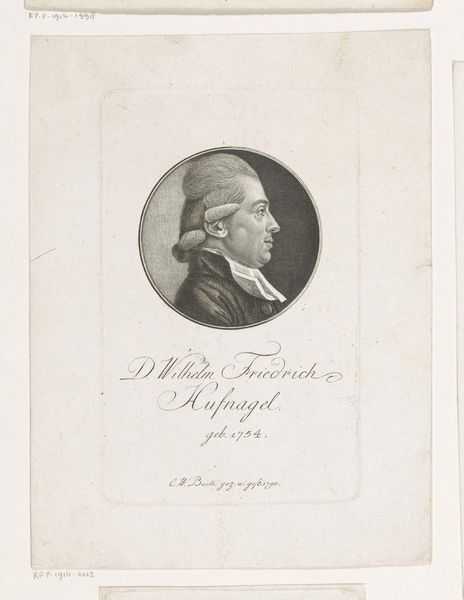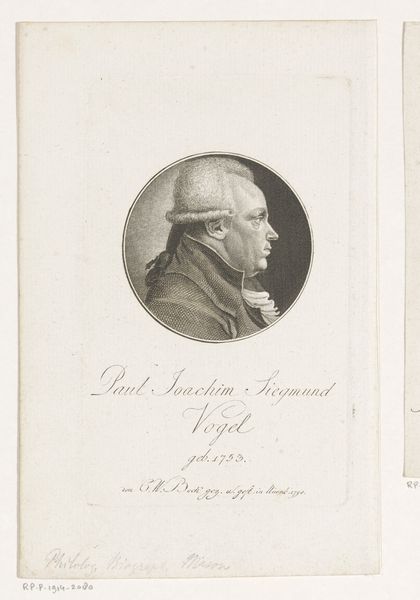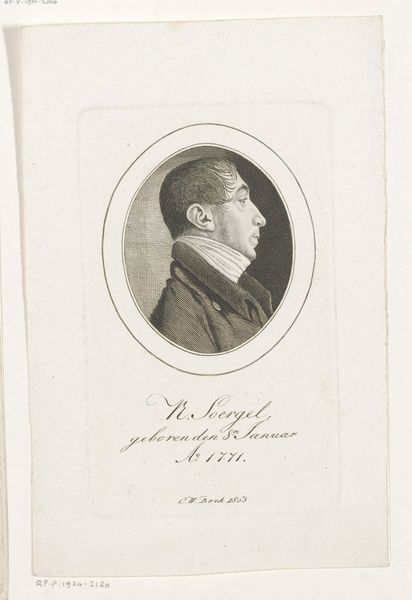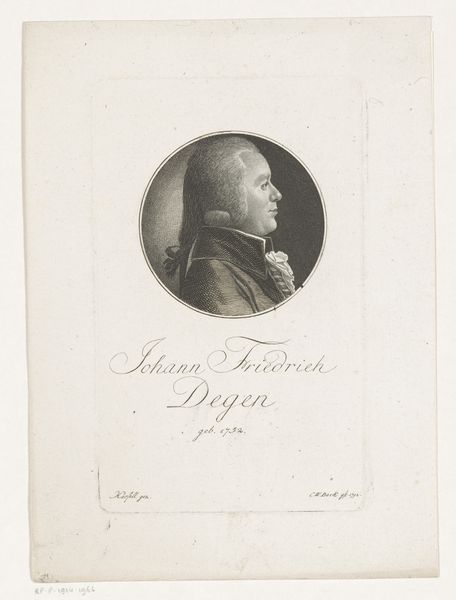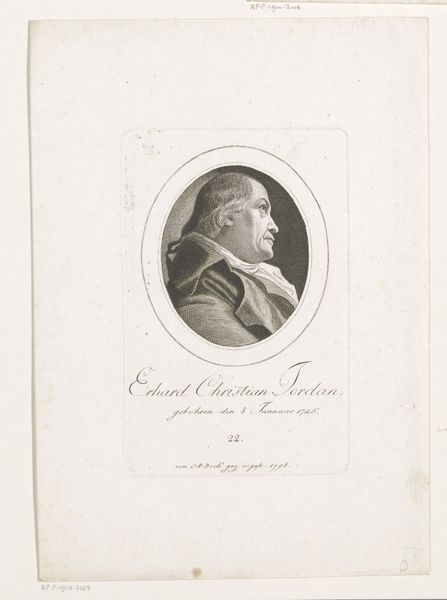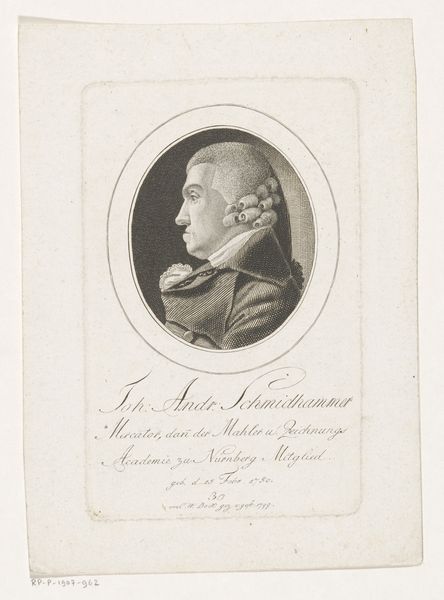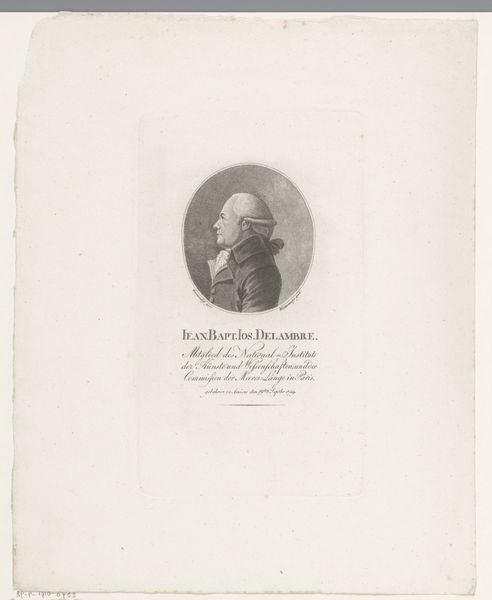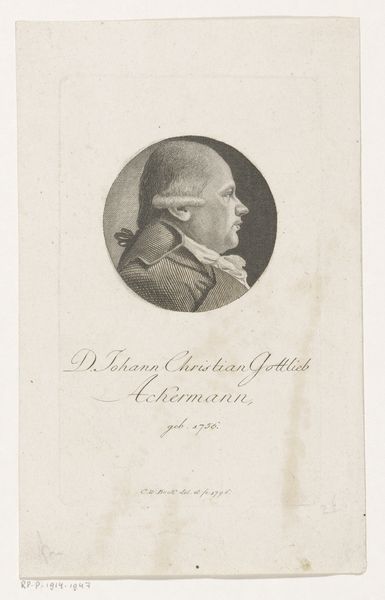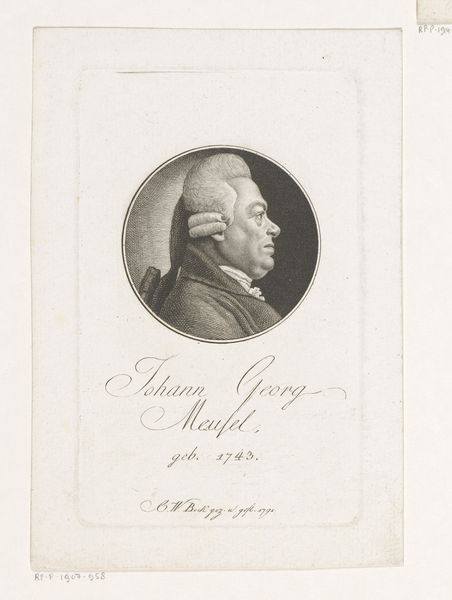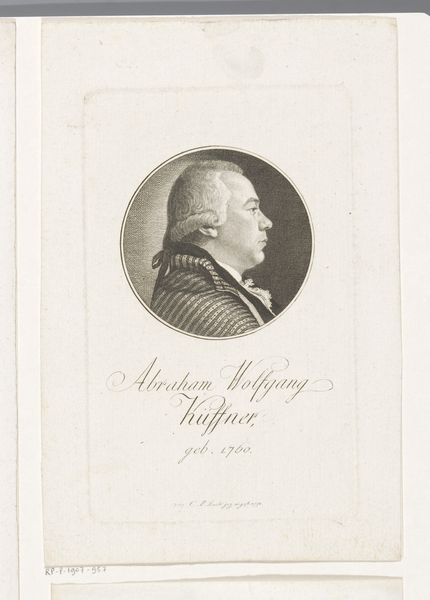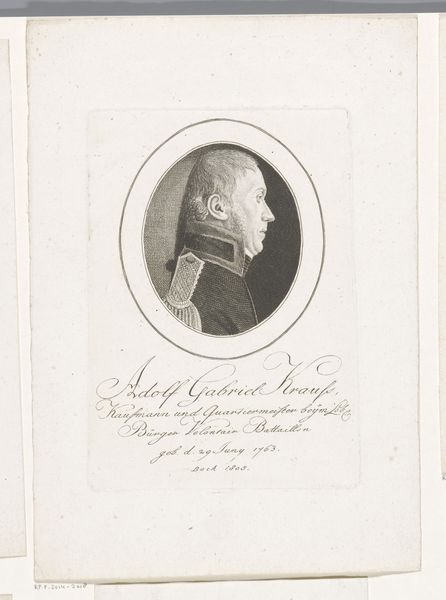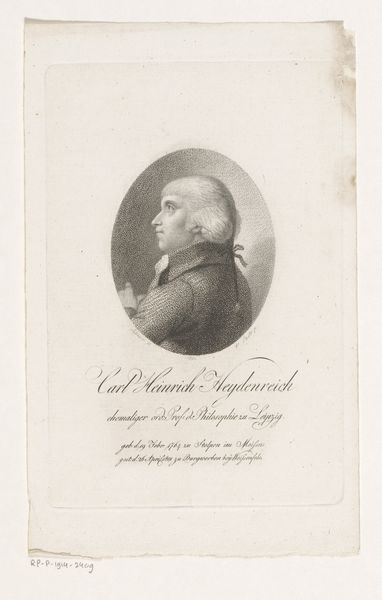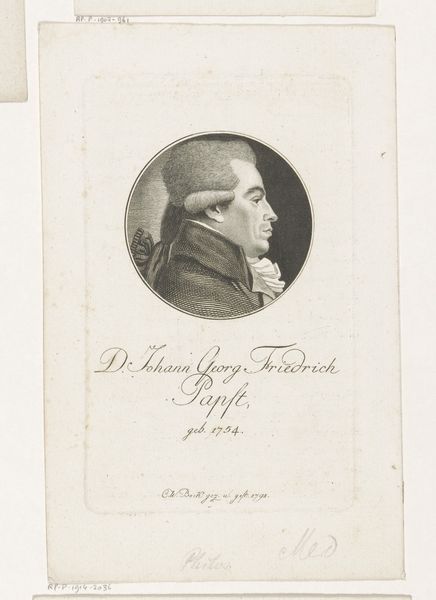
drawing, print, paper, engraving
#
portrait
#
drawing
#
neoclacissism
# print
#
paper
#
history-painting
#
engraving
Dimensions: height 148 mm, width 94 mm
Copyright: Rijks Museum: Open Domain
Curator: Looking at this print, I immediately think, "severe elegance." There's a restraint here that's quite appealing, almost calming. What do you think? Editor: I’m more struck by the sense of formality; it’s so...buttoned-up, literally and figuratively. We're viewing Christoph-Wilhelm Bock's engraving from 1791, entitled "Portret van Johann Friedrich Breyer" and part of the Rijksmuseum's collection. It captures the likeness of Johann Friedrich Breyer, born 1738. It is very much rooted in Neoclassicism with its controlled lines and serious representation of a notable citizen. Curator: "Buttoned-up" is a perfect way to describe it. The detail is amazing for an engraving. I mean, look at the way Bock suggests the texture of the man’s coat, with all those tiny etched lines. It seems this person holds authority. Do you think this portrait holds the air of reverence common for subjects of the time? Editor: Yes, certainly. Engravings like this one were often commissioned to commemorate or celebrate individuals of importance within a community. Creating portraits meant constructing very specific kinds of public figures; ones that projected virtues of steadfastness, intellectual gravity, and social status. It is definitely an official portrait of someone to be remembered and it’s so telling about how people wished to be seen then. There’s something poignant about that constructed persona that's so at odds with how transparent and revealing we are today. Curator: That’s fascinating how the portrait offers us this unique window into understanding both that person, Breyer, but also Bock's social and political setting in that era. If we look close enough, we can discover the period through a visual portrayal that holds such values. Editor: Exactly! You said it well; it reflects our values. Each of the sharp and fine lines is saying so much without spelling it out. Well, it certainly makes you ponder who will represent *us* in centuries to come! Curator: Indeed, let us hope they see past our carefully curated digital selves. Thank you! Editor: Thank you, that was illuminating!
Comments
No comments
Be the first to comment and join the conversation on the ultimate creative platform.
